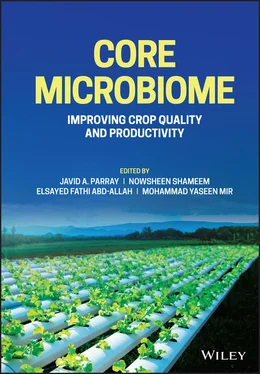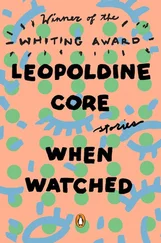7 Aziz, E.E. and Hendawy, S.F. (2008). Effect of soil type and irrigation intervals on plant growth, essential oil yield and constituents of Thymus vulgaris plant.
8 Badri, D.V., Weir, T.L., Daniel, V.D.L., and Vivanco, J.M. (2009). Rhizosphere chemical dialogues: Plant–microbe interactions. Current Opinion in Biotechnology 20 (6): 642–650.
9 Bafana, A. (2013). Diversity and metabolic potential of culturable root-associated bacteria from Origanum vulgare in sub-Himalayan region. World Journal of Microbiology and Biotechnology 29 (1): 63–74.
10 Bais, H.P., Park, S.-W., Weir, T.L., Callaway, R.M., and Vivanco, J.M. (2004). How plants communicate using the underground information superhighway. Trends in Plant Science 9 (1): 26–32.
11 Baker, S. and Satish, S. (2013). Antimicrobial evaluation of fluorescent pseudomonas sp inhabiting medicinal plant Annona squamosa L. Journal of Pure and Applied Microbiology 7 (2): 1027–1033.
12 Belaqziz, R., Romane, A., and Abbad, A. (2009). Salt stress effects on germination, growth and essential oil content of an endemic thyme species in Morocco (Thymus maroccanus Ball.). Journal of Applied Sciences Research (July): 858–863.
13 Berendsen, R.L., Pieterse, C.M., and Bakker, P.A. (2012). The rhizosphere microbiome and plant health. Trends in Plant Science 17: 478–486. doi: 10.1016/j.tplants.2012.04.001.
14 Bulgarelli, D., Schlaeppi, K., Spaepen, S., Themaat, V., Loren, E.V., and Schulze-Lefert, P. (2013). Structure and functions of the bacterial microbiota of plants. Annual Review of Plant Biology 64: 807–838.
15 Cakmak, I. (2005). The role of potassium in alleviating detrimental effects of abiotic stresses in plants. Journal of Plant Nutrition and Soil Science 168 (4): 521–530.
16 Camejo, D., Rodríguez, P., Morales, M.A., Dell’Amico, J.M., Torrecillas, A., and Alarcón, J.J. (2005). High temperature effects on photosynthetic activity of two tomato cultivars with different heat susceptibility. Journal of Plant Physiology 162 (3): 281–289.
17 Castillo, U.F., Strobel, G.A., Ford, E.J., Hess, W.M., Porter, H., Jensen, J.B., and Teplow, D.B. (2002). Munumbicins, wide-spectrum antibiotics produced by Streptomyces NRRL 30562, endophytic on Kennedia nigriscansaa. The GenBank accession number for the sequence determined in this work is AY127079. Microbiology 148 (9): 2675–2685.
18 Castillo, U., Harper, J.K., Strobel, G.A., Sears, J., Alesi, K., Ford, E., and Ge, H. (2003). Kakadumycins, novel antibiotics from Streptomyces sp. NRRL 30566, an endophyte of Grevillea pteridifolia. FEMS Microbiology Letters 224 (2): 183–190.
19 Chandra, D., Kim, J.G., and Kim, Y.P. (2012). Changes in microbial population and quality of microgreens treated with different sanitizers and packaging films. Horticulture, Environment, and Biotechnology 53 (1): 32–40.
20 Chowdhary, K., Kumar, A., Sharma, S., Pathak, R., and Jangir, M. (2018). Ocimum sp.: Source of biorational pesticides. Industrial Crops and Products 122: 686–701.
21 Cloete, K.J., Przybylowicz, W.J., Mesjasz‐przybylowicz, J.O.L.A.N.T.A., Barnabas, A.D., Valentine, A.J., and Botha, A. (2010). Micro‐particle‐induced X‐ray emission mapping of elemental distribution in roots of a Mediterranean‐type sclerophyll, Agathosma betulina (Berg.) Pillans, colonized by Cryptococcus laurentii. Plant, Cell & Environment 33 (6): 1005–1015.
22 Compant, S., Van Der Heijden, M.G., and Sessitsch, A. (2010). Climate change effects on beneficial plant–microorganism interactions. FEMS Microbiology Ecology 73 (2): 197–214.
23 Dai, C.-C., Chen, Y., Wang, X.-X., and Li, P.-D. (2013). Effects of intercropping of peanut with the medicinal plant Atractylodes lancea on soil microecology and peanut yield in subtropical China. Agroforestry Systems 87 (2): 417–426.
24 Debbab, A., Aly, A.H., Edrada-Ebel, R., Müller, W.E.G., Mosaddak, M., Hakikj, A., and Proksch, P. (2009). Bioactive secondary metabolites from the endophytic fungus Chaetomium sp. isolated from Salvia officinalis growing in Morocco. Biotechnology, Agronomy, Society and Environment (BASE) 13 (2): 229–234.
25 Debnath, M., Pandey, M., and Bisen, P.S. (2011). An omics approach to understand the plant abiotic stress. Omics: A Journal of Integrative Biology 15 (11): 739–762.
26 Dos Santos, A.L.W., Elbl, P., Navarro, B.V., de Oliveira, L.F., Salvato, F., Balbuena, T.S., and Floh, E.I.S. (2016). Quantitative proteomic analysis of Araucaria angustifolia (Bertol.) Kuntze cell lines with contrasting embryogenic potential. Journal of Proteomics 130: 180–189.
27 Dubey, A., Malla, M.A., Kumar, A., Dayanandan, S., and Khan, M.L. (2020). Plants endophytes: Unveiling hidden agenda for bioprospecting toward sustainable agriculture. Critical Reviews in Biotechnology 40 (8): 1210–1231.
28 Dubey, D., Kothapalli, N., McKeon, A., Flanagan, E.P., Lennon, V.A., Klein, C.J., and Tillema, J.-M. (2018). Predictors of neural-specific autoantibodies and immunotherapy response in patients with cognitive dysfunction. Journal of Neuroimmunology 323: 62–72.
29 Egamberdieva, D., Wirth, S.J., Alqarawi, A.A., Abd_Allah, E.F., and Hashem, A. (2017). Phytohormones and beneficial microbes: Essential components for plants to balance stress and fitness. Frontiers in Microbiology 8: 2104.
30 Eliašová, A., Repčák, M., and Pastírová, A. (2004). Quantitative changes of secondary metabolites of Matricaria chamomilla by abiotic stress. Zeitschrift Für Naturforschung C 59 (7-8): 543–548.
31 El-Leithy, E.S., Shaker, D.S., Ghorab, M.K., and Abdel-Rashid, R.S. (2010). Evaluation of mucoadhesive hydrogels loaded with diclofenac sodium–chitosan microspheres for rectal administration. Aaps Pharmscitech 11 (4): 1695–1702.
32 Ezra, D., Castillo, U.F., Strobel, G.A., Hess, W.M., Porter, H., Jensen, J.B., and Maranta, M. (2004). Coronamycins, peptide antibiotics produced by a verticillate Streptomyces sp. (MSU-2110) endophytic on Monstera sp. Microbiology 150 (4): 785–793.
33 Farahani, H.A., Valadabadi, S.A., Daneshian, J., and Khalvati, M.A. (2009). Evaluation changing of essential oil of balm (Melissa officinalis L.) under water deficit stress conditions. Journal of Medicinal Plants Research 3 (5): 329–333.
34 Freitas, H., Prasad, M.N.V., and Pratas, J. (2004). Plant community tolerant to trace elements growing on the degraded soils of Sao Domingos mine in the southeast of Portugal: Environmental implications. Environment International 30 (1): 65–72.
35 Gao, D.-W., Fu, Y., Tao, Y., Li, X.-X., Xing, M., Gao, X.-H., and Ren, N.-Q. (2011). Linking microbial community structure to membrane biofouling associated with varying dissolved oxygen concentrations. Bioresource Technology 102 (10): 5626–5633.
36 Gao, S., Ouyang, C., Wang, S., Xu, Y., Tang, L., and Chen, F. (2008). Effects of salt stress on growth, antioxidant enzyme and phenylalanine ammonia-lyase activities in Jatropha curcas L. seedlings. Plant, Soil and Environment 54 (9): 374–381.
37 Geu-Flores, F., Sherden, N.H., Courdavault, V., Burlat, V., Glenn, W.S., Wu, C., and O’Connor, S.E. (2012). An alternative route to cyclic terpenes by reductive cyclization in iridoid biosynthesis. Nature 492 (7427): 138–142.
38 Giddings, L.-A., Liscombe, D.K., Hamilton, J.P., Childs, K.L., DellaPenna, D., Buell, C.R., and O’Connor, S.E. (2011). A stereoselective hydroxylation step of alkaloid biosynthesis by a unique cytochrome P450 in Catharanthus roseus. Journal of Biological Chemistry 286 (19): 16751–16757.
39 Golinska, P., Wypij, M., Agarkar, G., Rathod, D., Dahm, H., and Rai, M. (2015). Endophytic actinobacteria of medicinal plants: Diversity and bioactivity. Antonie Van Leeuwenhoek 108 (2): 267–289.
40 Gopalakrishnan, S., Sathya, A., Vijayabharathi, R., Varshney, R.K., Gowda, C.L.L., and Krishnamurthy, L. (2015). Plant growth promoting rhizobia: Challenges and opportunities. 3 Biotech 5 (4): 355–377.
Читать дальше











